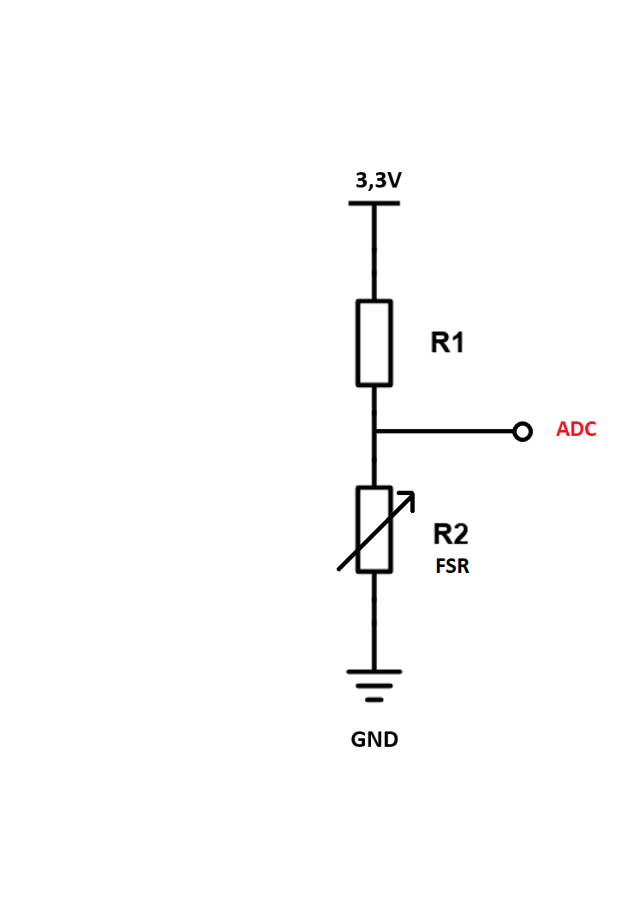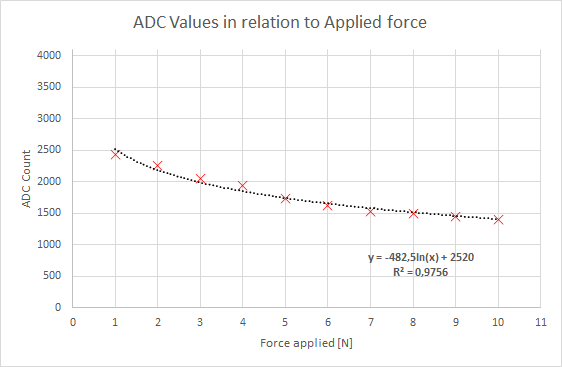I have built a force sensor using an arduino and a self built force sensitive resistor (FSR.) The sensor system consists of a simple voltage divider, where the voltage across the FSR is measured by an ADC and the Arduino.
I'm trying to describe how good my sensor system is, and would like to do this by finding the uncertainty in measurement +/- newtons of the system.
The FSR changes its resistance non-linearly to applied force (however the conductance changes linearly with force.)
To calibrate the system, I used an analog force-push-pull gauge (range 0-10 N and resolution 0.05 N) with which I applied a force to my sensor from 1 - 10 N in 1 N increments. I measured the ADC counts at each force level and did 5 repeats and took the average, as shown in the table and the graph.
From the average, I plotted a logarithmic curve which has the function y=-482,5*ln(x)+2520 also shown in the graph below. This function can then be rearranged to solve for x which is Newtons = e^((2520.0/482.5)-(ADCvalue/482.5)).
Since the voltage ~ force (ADC~N) relationship is not linear, the sensitivity is not linear either. This means for low forces the sensor is sensitive, for high forces it is less sensitive. From my understanding the uncertainty in force measurement would be worse at higher forces because of the ADC quantization error.
In order to quantify the accuracy of the system would I have to perform a test measurement where I compare the newton values [N] which the sensor system shows according to the calibrated logarithmic function, compared to the force applied with the force push-pull-gauge?
How would I go about calculating the uncertainty of the system in +/- N?





